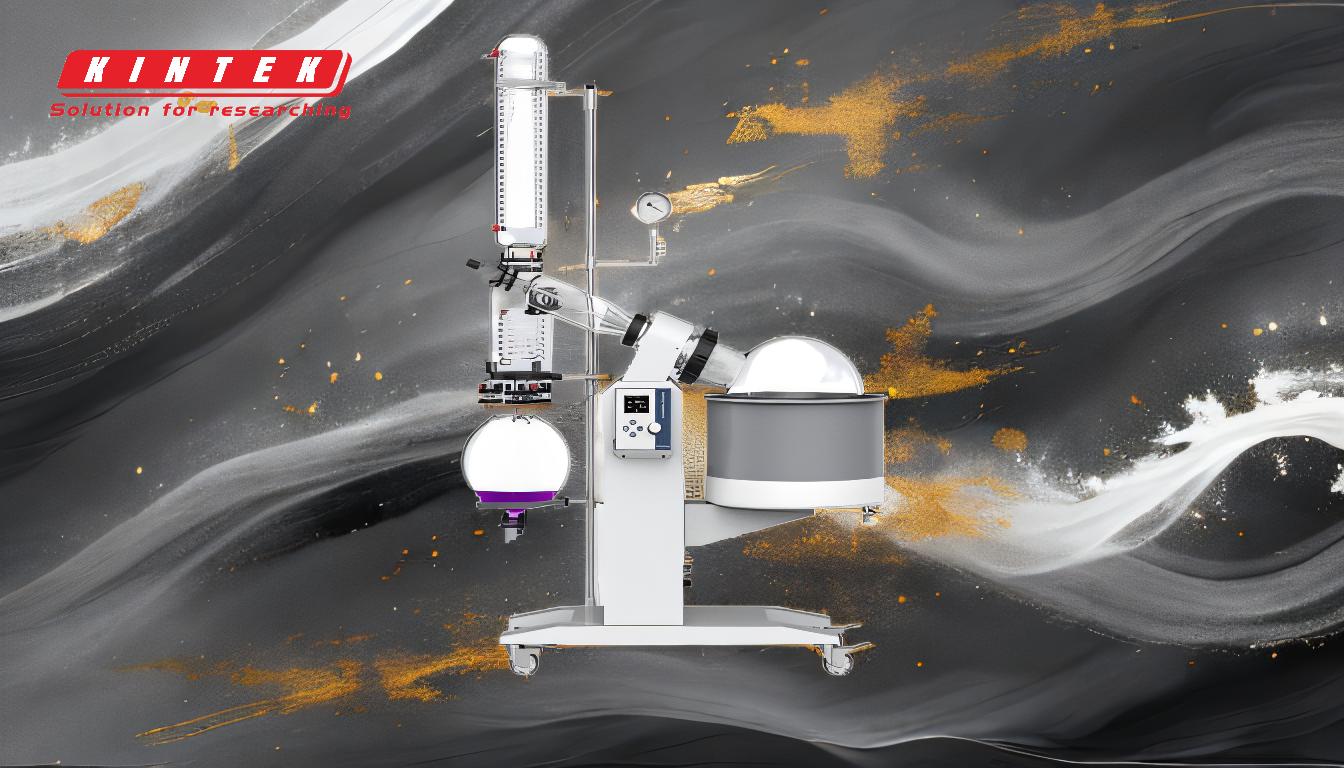A rotary evaporator is indeed capable of removing water from samples. This device operates by rotating the sample flask in a heated water bath while applying a vacuum, which lowers the boiling point of water, allowing it to evaporate at lower temperatures. This method is efficient, gentle, and widely used in various applications, including laboratories and kitchens, to concentrate solutions by removing water or other solvents. The rotary evaporator is particularly valued for its ability to prevent thermal decomposition of sensitive materials.
Key Points Explained:

-
Mechanism of Water Removal:
- The rotary evaporator works by rotating the sample flask in a heated water bath while applying a vacuum. This rotation increases the surface area of the liquid, promoting faster evaporation.
- The vacuum reduces the pressure inside the system, which lowers the boiling point of water, allowing it to evaporate at temperatures much lower than its normal boiling point (100°C at 1 atm).
-
Efficiency and Speed:
- The combination of rotation, heating, and reduced pressure makes the rotary evaporator highly efficient at removing water. This method is significantly quicker than traditional evaporation techniques that rely solely on heating.
- The uniform heating provided by the water bath ensures that the sample is heated evenly, reducing the risk of localized overheating.
-
Gentle on Sensitive Materials:
- One of the key advantages of using a rotary evaporator is its ability to remove water without subjecting the sample to high temperatures. This is particularly important for heat-sensitive materials that could degrade or decompose at higher temperatures.
- The gentle evaporation process helps preserve the integrity of delicate compounds, such as aroma compounds in food or volatile organic compounds in chemical samples.
-
Versatility in Applications:
- Rotary evaporators are used in a wide range of applications, from laboratories to kitchens. In laboratories, they are commonly used to remove solvents from chemical mixtures, including water.
- In the food industry, rotary evaporators are used to concentrate liquids like fruit juices by removing water, enhancing flavors without exposing the product to high heat.
-
Capacity and Scalability:
- Rotary evaporators can handle a range of sample volumes, from small laboratory-scale samples to larger volumes up to 3 liters. This scalability makes them suitable for both research and industrial applications.
- The ability to handle larger volumes efficiently is particularly beneficial in industrial settings where large quantities of material need to be processed.
-
Comparison with Traditional Methods:
- Traditional methods of water removal, such as open-air evaporation or distillation, often require higher temperatures and longer processing times. These methods can also lead to thermal degradation of sensitive compounds.
- The rotary evaporator offers a more controlled and efficient alternative, reducing the risk of sample degradation and speeding up the evaporation process.
-
Practical Considerations:
- When using a rotary evaporator to remove water, it is important to monitor the temperature of the water bath and the vacuum pressure to ensure optimal conditions for evaporation.
- Proper maintenance of the rotary evaporator, including regular cleaning and checking for leaks, is essential to maintain its efficiency and prolong its lifespan.
In summary, a rotary evaporator is a highly effective tool for removing water from samples, offering advantages in terms of speed, efficiency, and the preservation of sensitive materials. Its versatility and scalability make it suitable for a wide range of applications, from laboratory research to industrial processes.
Summary Table:
| Key Feature | Description |
|---|---|
| Mechanism | Rotates sample flask in a heated water bath under vacuum to lower boiling point. |
| Efficiency | Combines rotation, heating, and vacuum for faster, uniform evaporation. |
| Gentle on Materials | Prevents thermal decomposition of heat-sensitive compounds. |
| Applications | Labs (solvent removal) and kitchens (food concentration). |
| Capacity | Handles small to large volumes (up to 3 liters). |
| Advantages Over Traditional | Faster, more controlled, and reduces sample degradation. |
| Practical Tips | Monitor temperature and vacuum pressure; maintain equipment regularly. |
Discover how a rotary evaporator can enhance your processes—contact us today for expert advice!









